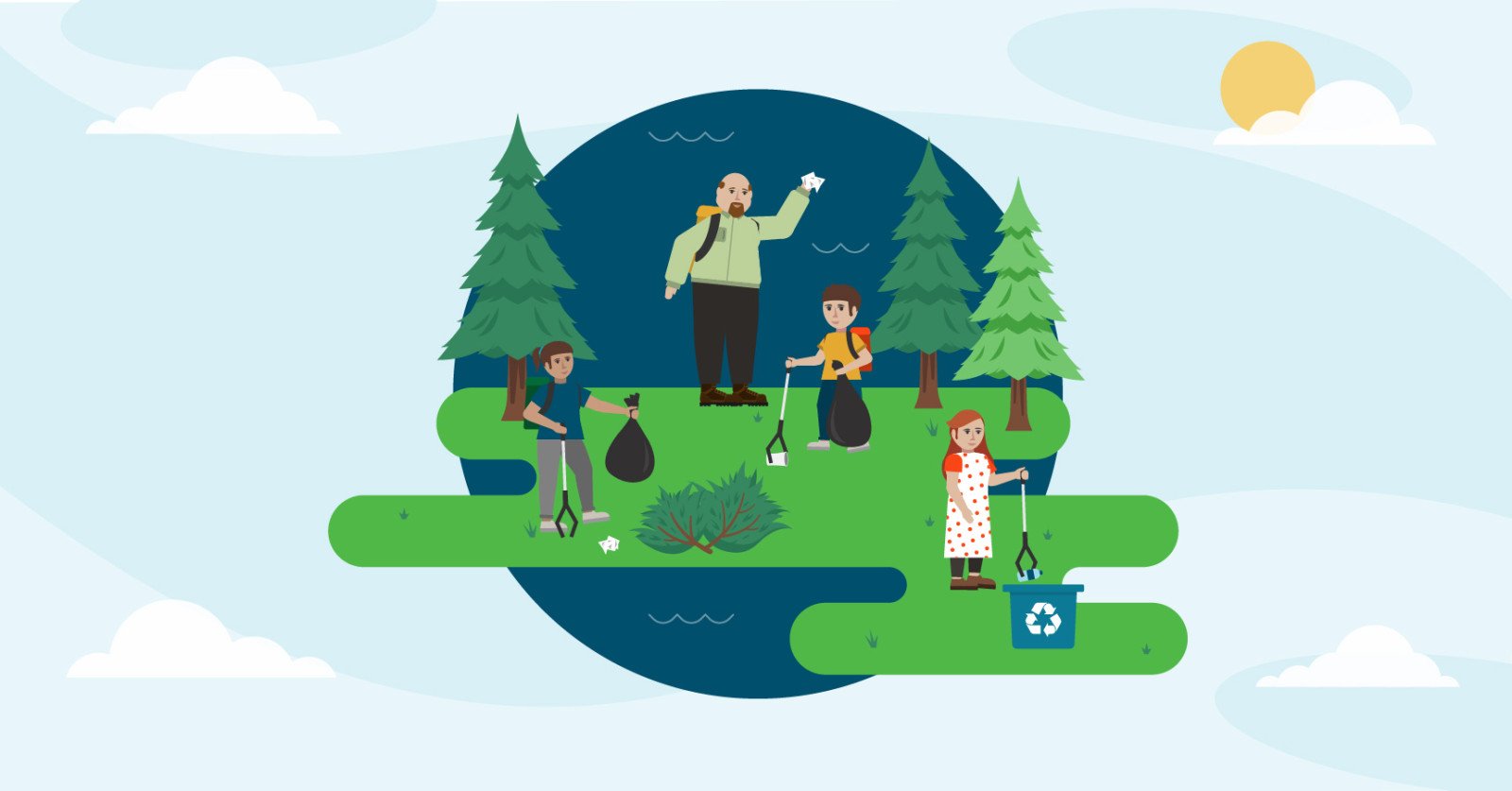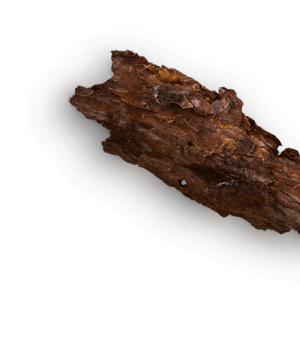It’s the only home we have
Learn the impacts of litter and participate in a litter clean up to take care of our 'home'.

Overview
Litter, especially plastic, is ugly, unpleasant and it harms plants, animals, and the environment; it is polluting our ‘home’. Let’s explore effects of littering, participate in a litter clean up, and learn how we can prevent litter to take care of our ‘home’.
Instructions
What you'll need
- Garden gloves and tongs or litter pickers, one set per students
- Three to four garbage bags
- “Litterless story time” slideshow (French version available)
- Digital projector and screen
- Ask students why they think it’s important to help protect our planet? Encourage them to think about animals, plants, rivers, lakes, forests, parks, and people.
- Ask students to share how they feel when they see litter on the ground, and why they think it’s a problem. Litter is ugly and often pollutes the land and water ways. It can be dangerous for animals, who might eat it or get stuck in it and can be dangerous for humans.
- Discuss that when we take care of the planet, we are protecting humans as well as all our non-human relations. Many cultures, including Indigenous cultures, teach us that we need to respect the Earth and all the beings who live on it, and that we have a responsibility to take care.
Litter clean up
- Share with students that we will be going outside to pick up litter, following these safety rules:
- Use gloves and tongs or litter pickers to pick up litter, not our hands.
- Find an adult to help, if we see something sharp, like a needle or broken glass.
- Find a location for the class to clean up litter. Consider going to a community space, park, or forest, if possible. Share with students that it’s important to care for our community by picking up litter in our community and not just on the school grounds.
- Put students in small groups of two to three students to work together; provide them with gloves, and tongs or litter pickers. Head outside with garbage bags; designate one bag for garbage, one bag for items that can be recycled, like cans and bottles and one bag for compost like banana peels if your school has a composting program.
What did we find?
- After the clean-up, conduct a litter audit by having students take turns spotting an item of litter, identifying it, and making a list on the board. Items found might include plastic straws, plastic sandwich bags, juice box wrappers, cup lids, and cheese string wrappers, cans/bottles and masks or other PPE.
- After sorting the litter into available waste streams like garbage, composting, and recycling, discuss what they found and where it came from. They will likely discover that a lot of the litter collected was plastic. Plastic litter is especially harmful because it doesn’t break down, and animals eat it and think they are full, depriving their body of needed nutrients from food.
- Ask students how they feel after picking up the litter. Doing something for our community that keeps all living things on our planet healthy and safe can make us happy and proud.
- Discuss ways we can all help prevent litter, like making sure we put waste in the correct bin, reducing our waste with actions like a litterless lunch, and safely picking up litter we find.
Take action
- Pull up the “Litterless story time” slideshow and at slide 2 explain that as a class, students will complete storybook slides to explore impacts of litter and come up with their own solutions. Indigenous Peoples have cultural traditions that include storytelling. In B.C., Indigenous Peoples use storytelling to guide and teach since it's an impactful way of remembering and learning.
- At slide 3, read the story about Bubbles the skunk. Next, brainstorm how the story could end with ideas like don’t buy drinks in disposable cups, make sure the cup ends up in the recycling when you’re done, cut the lid in half so it can’t trap an animal and safely pick up litter that we find.
- At slide 4, read the story about Peanut the turtle. Ideas on how the story could end include cutting up plastic rings so there are no holes and safely picking up litter that we find.
- At slide 5, read the story about how we can accidentally litter. Ask students to consider ways to complete the story like checking we have zipped up our backpacks, reminding others kindly, if you see their bags unzipped and safely picking up litter that we find.
- At slide 6, read the story about garbage in the classroom. Have students think of solutions to reduce garbage like having a litterless lunch, putting snacks in reusable containers, and recycling or composting.
- At slide 7, read the story about a plastic disposable water bottle. Ask students how the story could end with ideas like using a reusable water bottle that we fill with tap water and safely picking up litter that we find. Share that saving water is so important; we need water for us, animals and plants and we use it to make electricity in B.C.!
- At slide 8, review that we can all do our part to protect our planet, keep it beautiful, and make sure all living things are safe and healthy. At slide 9, share that powering down our computers and turning off the lights also protects our planet.
Modify or extend this activity
- Students could choose one of the litterless story slides, draw a picture to take home and share the story with their families.
- As a class adopt a street to keep our planet 'home' healthy and clean.
- Check out the Power Smart for Schools reusable snack bag craft to reduce waste and help prevent littering.
- Organize a lights-out litterless lunch.
- Share the video "A whale’s tale" with the class and discuss how plastic in the ocean can hurt people and animals, and how we can help by reducing our use of plastics and making sure we recycle.
Curriculum Fit
Core competencies:
Communications and collaboration
- Connect and engage with others (to share and develop ideas)
- Working collectively
Thinking
- Creative thinking: generating and incubating
- Critical thinking: analyze and critique/question and investigate
Social awareness and responsibility
- Contributing to community and caring for the environment
The activities also connect to a variety of grade-specific curricular competencies and content in a variety of subjects including Physical and Health Education, English Language Arts, Science, and Social Studies.
Assessments
- Assess students’ understanding of why litter is harmful for our planet and all living things.
- Assess students’ creativity and critical thinking in completing the stories and reducing litter and waste.
Teaching Notes
Plastic ocean
Every year, about 8 million tons of plastic ends up in the ocean. About half of the plastic we use is single-use and could be avoided. Plastic does not biodegrade but can break into small pieces through ocean waves and sunlight, creating micro plastics. The top 5 trash items found in the ocean are cigarette butts, plastic bottles, food wrappers, plastic bags, and straws/stirrers. Plastic impacts water quality, wildlife, and human food and health. For more details on ocean plastics, check out EcoWatch.
Young people can take action
Young people can act at school, in their community and at home to protect and care for the planet. We can empower them with a deeper understanding of our responsibility to take care of the planet we depend on, and the plants and animals that live here too.
BC Hydro’s Environmental responsibility
In B.C., we are powered by water. The electrical system stretches across each region of the province and the traditional territories of Indigenous Nations. We have 30 hydroelectric plants and a network of over 80,000 kilometers of power lines that transport electricity from our generating stations over mountain tops, through river valleys to homes and businesses in B.C. We have the cleanest generation in Western North America and amongst the lowest greenhouse gas emissions of any utility in North America.
We recognize that while water is core to our business, it also holds spiritual and cultural values to Indigenous Nations, and environmental importance to all communities in B.C. We’ll work together to protect the province’s water resources and honour these multiple uses and values as we move forward. Check out Environmental responsibility for ways BC Hydro is protecting and sharing the resource.






